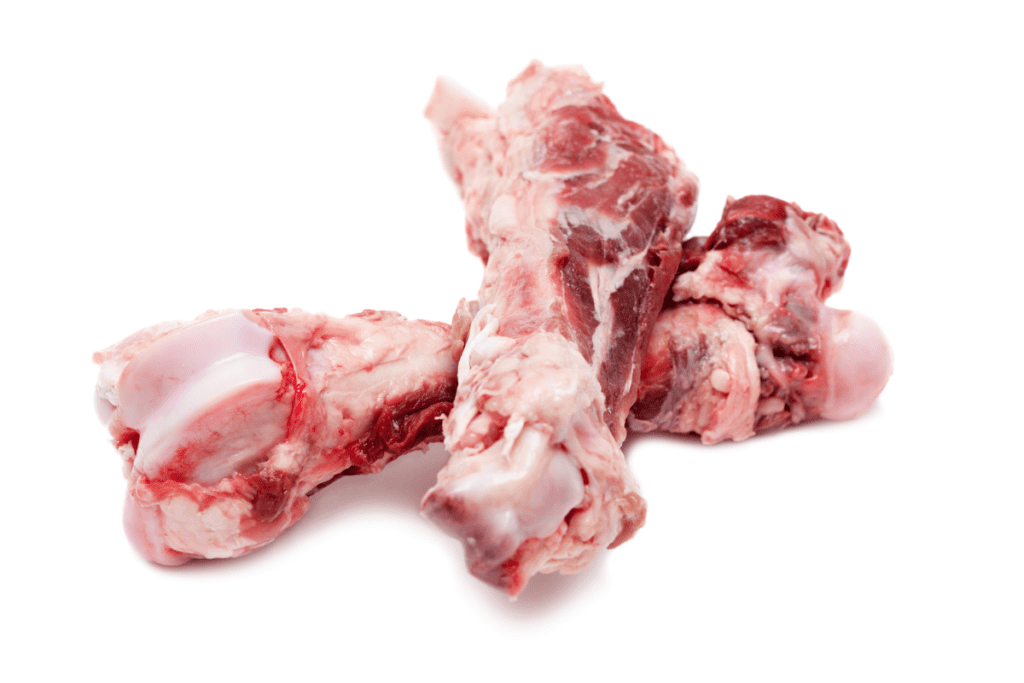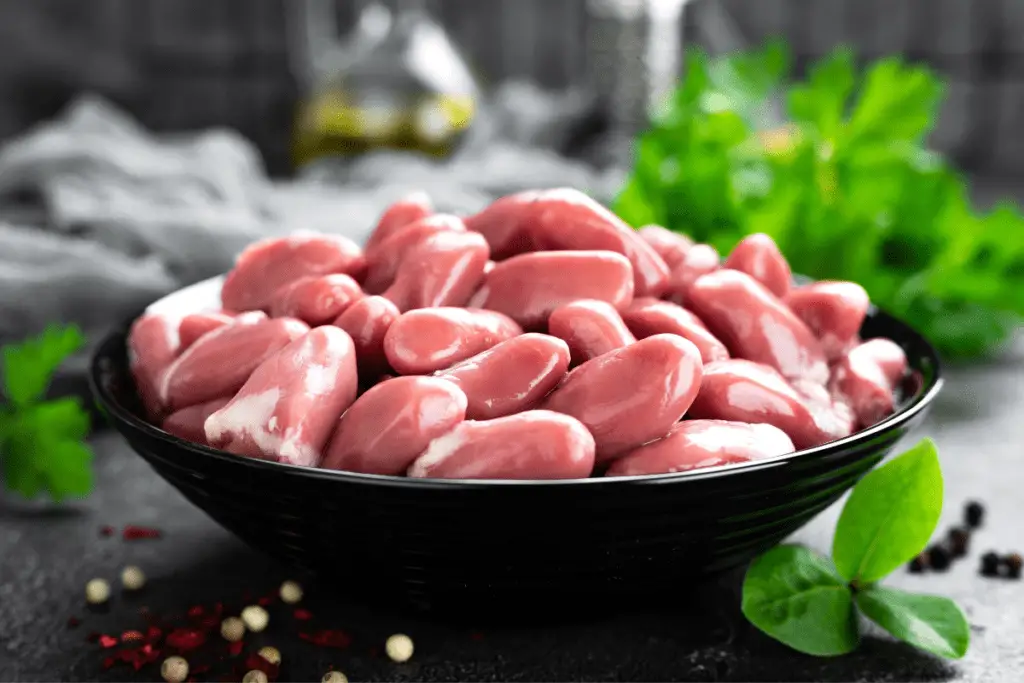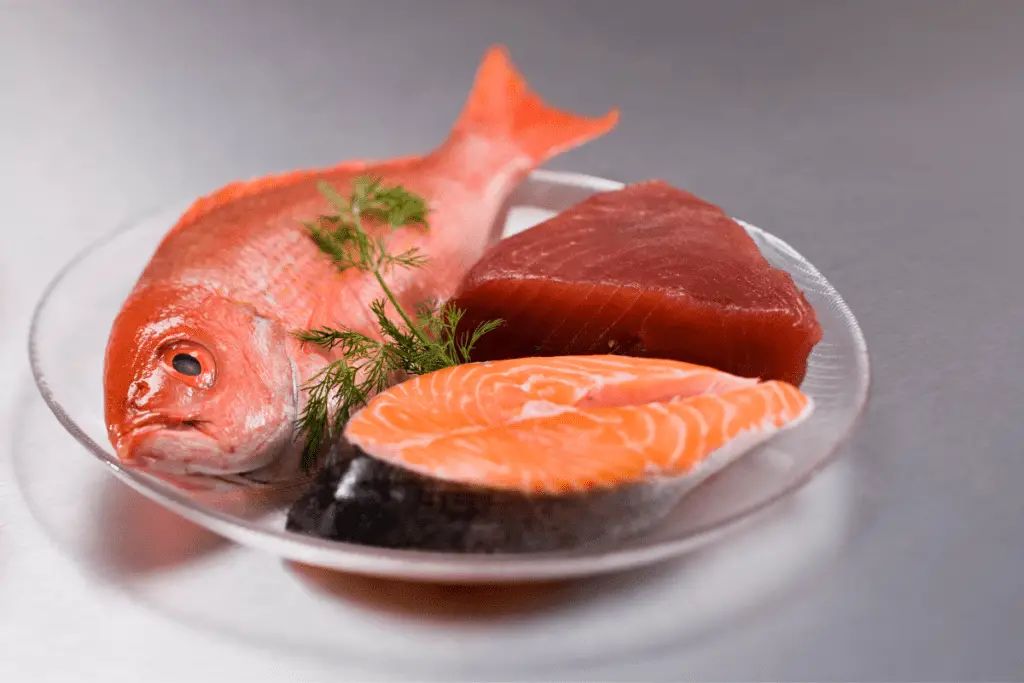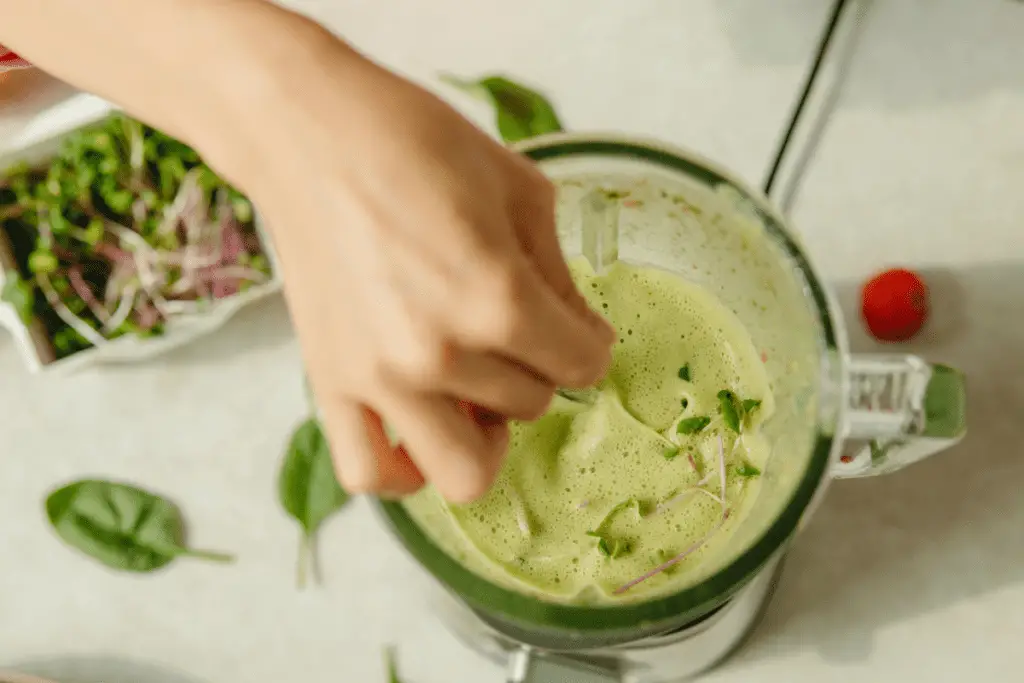What To Feed Pit Bulls In A Raw Diet
As mentioned in the previous two articles, species-appropriate pit bull nutrition consists of raw meats and bones, fish, eggs, and very small amounts of greens, herbs, veggies, and fruit. But what exactly should you feed?

Raw meaty bones (RMBs) comprise the main part of the diet. Why is it so important that you feed bones and not just meat? In a word, calcium. Dogs not only have specific calcium requirements (too much and too little can both cause problems), but they also require calcium and phosphorous in a ratio between 1:1 to 2:1.
Meat contains tiny amounts of calcium, but lots of phosphorus, while bones are high in calcium and contain a moderate amount of phosphorus.
RMBs with the highest bone to meat levels (e.g., poultry wings, backs, and necks) deliver calcium and phosphorus in a ratio of roughly 1:1. If you feed a lot of bones that are “meatier” (e.g., chicken leg quarters or breasts), you’ll need to add another calcium source to the diet. But don’t worry, by giving eggs with the shells, you can feed even the meatiest bones without risk of unbalancing the diet.
Some dogs also do fine with beef ribs and necks, but these bones are quite a bit harder. They’re not a good idea for dogs new to the species-appropriate diet.
Due primarily to cost, chicken and turkey RMBs will probably be the main component of your pit bull’s diet, but don’t feed only poultry. Pure poultry diets can be too low in zinc, so feed red meat at least twice a week. Remember, variety is important.
The risk of trichinosis is very slight when feeding USDA inspected pork intended for human consumption, but if you’re concerned, freezing the meat for 3 weeks at 5 degrees Fahrenheit or for 3 days at -4 degrees Fahrenheit will kill the worms.
Unfortunately the species of Trichinella found in wild game meats such as venison, elk, and bear is more resistant to freezing.
If you have access to such game meats, inspect them carefully for the presence of parasites before feeding them to your dog. If you’re not sure what to look for, have the meat inspected by someone who does.

About 10% of your pit bull’s diet should consist of raw organ meats. You can feed any inspected organ meat, but livers, kidneys, and hearts from chicken, turkey, lamb, and beef are usually the easiest to find.
Chicken and turkey gizzards are also an option. Another great choice–if you can find it–is green tripe (not the bleached tripe available in supermarkets). Kidneys and especially livers are very rich and should not comprise more than half of your organ meat mix.
Most meat should be fed on the bone, but adding small amounts (16-20 oz a week) of boneless muscle meat to the diet–either ground or in chunks–is fine as long as you remember to feed the eggs with their shells.
The main reason you may want to feed boneless muscle meat on occasion is that your pit bull needs some red meat in her diet, and if you can’t find lamb RMBs or oxtails at an affordable price, ground beef may be your best bet for inexpensive red meat.

Wild fish frequently contains parasites, so stick to farmed fish or wild fish species such as tuna and snapper that have a very low risk of parasites. When in doubt, look for raw fish that’s recommended for sushi.
Never feed raw salmon due to the risk of salmon poisoning disease, which is potentially fatal. Carp, catfish, and smelt can be fed on occasion but not at every fish meal because these species contain an enzyme that binds thiamin (vitamin B1). Fish that weigh less than half a pound can be fed whole–heads, guts, and all.
If you can’t find affordable raw fish, it’s okay to substitute canned mackerel, sardines, or tuna packed in spring water. Just make sure there aren’t any unwanted additives. It’s best to drain the fish before feeding to get rid off some of the salt.
Feed your pit bull a large raw egg with the shell 3-4 times a week. The egg’s shell is about 95% calcium, which is needed to balance the excess phosphorus contained in the organ meats, boneless muscle meats, meatier RMBs, and the eggs themselves.
How do you feed the shells? Wash them and leave them to dry for at least a day. Then grind them into a fine powder using one of those little electric coffee/spice grinders or a mortar and pestle. Mix the egg shell powder with raw egg, ground meat, or pureed veggies.

As mentioned in the first part of this series, dogs have no nutritional requirement for carbohydrates. Consequently feeding veggies and fruit is optional. It’s also a lot of work. Raw veggies and fruits need to be completely crushed in a food processor or juicer in order for your dog to be able to access their nutrients.
If you want to feed veggies, make enough for several weeks and freeze in serving-sized containers. Then thaw as needed.
So why would anyone go to the trouble of preparing a fruit and veggie meal if dogs have no need for it? These plant foods are very high in vitamins and minerals, and those are certainly beneficial.
If you want to make a veggie mix for your pit bull, endive and romaine lettuce, parsley, bok choy, dandelion and mustard greens, wheat grass and other grasses, broccoli, squash, zucchini, carrots, celery, pears and apples (without the core) are all good choices. Feed about 1/4 cup three times a week.
Supplements are also entirely optional, but you may want to add some fish body oil (not liver oil) and vitamin E to your pit bull’s diet.
Many dogs enjoy omega-3 fish oil capsules so much that you can give them as a healthy treat between meals. If you’re not feeding veggies, you might want to give a teaspoon of powdered greens or algae on occasion, but it’s not essential.
What Do Experts Say About Raw Food For Pit Bulls?
Many experts believe that raw diets can be dangerous. Many experts agree on, not recommending feeding them raw meat in any form, the reason being that is it could lead to severe health problems. They recommend feeding a more balanced commercial diet that includes meat, fruit and vegetables.
The Humane Society of the United States says people should not feed their pooches’ raw meat or bones as they can carry harmful pathogens.
“If you are feeding your dog a raw meat & vegetable diet, it is important to know that there are no harmful bacteria in the meat,” said Dr. Karen Becker, an animal behaviorist at the Humane Society of North Texas. “You should always talk with your veterinarian about the best approach for your dog’s health and well-being.”
However, she believes that some dogs can benefit from a raw diet if they have certain medical conditions like diabetes or allergies to other foods or ingredients in commercial kibble brands like chicken or beef. A raw diet is high in fat content and, therefore, rich in essential fatty acids (EFAs).
EFAs are necessary for many functions in the body, including shiny skin, brain and immune system health.
“I don’t think the raw food diet is good for dogs at all,” says veterinarian Lisa Freeman, DMV, PHD, DACVN in her article published in the Journal of the American Veterinary Association. Dr. Lisa says raw diets are also high in fat and calories, which can lead to obesity: “If I was feeding my dog raw diet and I knew he was prone toward obesity, then I would feed him cooked meat or commercial low-fat diet instead.”
Why Is Raw Diet The Best For Pitbulls?
A raw dog food diet wont only treat these common symptoms but can also lessen aging in their bodies in the long run! The long list of the benefits of a raw diet for Pitbulls will change your dog for the better and improve their quality and longevity of life! A raw diet will do so much for your dog.
Raw Food vs Kibble: What should you feed your pit bull?
Are raw food diets for dogs an ideal meal plan or a dangerous fad? Experts weigh in.
Raw dog food diets are controversial. But the popularity of the diets — which emphasize raw meat, bones, fruits, and vegetables — is rising.
Racing greyhounds and sled dogs have long eaten raw food diets. Extending those feeding practices to the family pet is an idea proposed in 1993 by Australian veterinarian Ian Billinghurst. He called his feeding suggestions the BARF diet, an acronym that stands for Bones and Raw Food, or Biologically Appropriate Raw Food.
Billinghurst suggested that adult dogs would thrive on an evolutionary diet based on what canines ate before they became domesticated: Raw, meaty bones and vegetable scraps. Grain-based commercial pet foods, he contended, were harmful to a dogâs health.
Many mainstream veterinarians disagree, as does the FDA. The risks of raw diets have been documented in several studies published in veterinary journals.
Since Billinghurstâs book,Give Your Dog a Bone, was published, several other types of raw dog food diets have emerged, including commercially processed raw food diets that are frozen or freeze-dried and combination diets that use blends of grains, vegetables, and vitamins that are mixed with raw meat purchased by the owner at the grocery store.